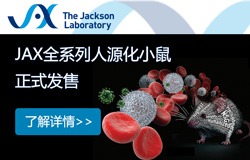Intestinal intraepithelial lymphocytes
Intestinal intraepithelial lymphocytes (IELs) are mostly T cells, which are continuously associated with gut epithelium.
1. The epithelial integrity is disrupted and IEL and intestinal epithelial cell (IEC) are liberated into the medium without altering the basement membrane.
2. The original protocols developed for IEL isolation require dissection to remove Peyer’s patches, and mincing of the tissue physically to disrupt the epithelium.
3. This method is limited by variable contamination of the IEL preparation with lamina propria lymphocytes.
4. These protocols for IEL isolation have required enzymatic digestion, chelation with agents like ethylene diamine-tetraacetic (EDTA), panning, or magnetic bead separation.
5. None of the modifications have proven entirely satisfactory. An alternative method for IEL isolation then is developed.
6. Intestine is everted, ligated, distended and then incubated with dithioerythritol (DTE) and subjected to repeated rigorous vortexing.
7. Contamination of this IEL preparation with lymphocytes from lamina propria and Peyer’s patches is minimal.
8. The low cell yield, however, makes it uncertain that phenotypic and functional characteristics of IELs prepared in this way are representative of the entire, much larger, IEL compartment.
9. To address these issues, a new technique for the rapid isolation of large numbers of highly purified IELs has been developed.
10. The technique is based in part on the susceptibility of intestinal epithelial cells to hypoxic conditions that leave the basement membrane relatively undisturbed.
11. The method is rapid and requires neither enzymatic digestion, nor surgical removal of Peyer’s patches, nor vigorous mechanical manipulation of the intestine.
12. The yield of rat IELs using this method is 5- to 10-fold greater than that reported by other methods.
13. Morphological and phenotypic analyses demon- strated that the purified cell population is comprised of IELs and is not contaminated with lamina propria or Peyer’s patch lymphocytes.
14. In the original protocols developed for IEL enrich, one-step Ficoll density gradients is commonly used.
15. It is effective in separating lymphocytes from more dense cells but not from less dense cells, such as epithelial cells.
16. The use of a separating medium such as Percoll which is adjusted to various densities by dilution is recommended.
17. Usually, a first centrifugation in 30% Percoll is performed and then a discontinuous gradient is applied.
18. The usual layers for the second Percoll are 20%-44%-67% for human cells and 30%-40/45%-75% for mouse or rat cells.
19. This procedure implies a low cell recovery but purity is usually good (90% IELs) though lower for human samples (60%-70%).
20. This final step involves staining IELs if their positive selection is preferred (with an antibody such as anti-CD45) or IEC if their depletion is favored (with anti-epithelial markers).
21. In the case of magnetic methods, which offer better viability, anti-Ig-coated paramagnetic beads are generally used to label the cells to be retained in the magnet.
22. Depletion of IEC provides with untouched IELs, and markers such as cytokeratin or BerEP47 have been used for the purpose.
Reference
1. Davies MD, Parrott DM. Preparation and purification of lymphocytes from the epithelium and lamina propria of murine small intestine. Gut. 1981; 22: 481-488.
2. Lundqvist C, Hammarstrom ML, Athlin L, Hammarstrom S. Isolation of functionally active intraepithelial lymphocytes and enterocytes from human small and large intestine. J Immunol Methods. 1992; 152: 253-263.
3. Mosley RL, Klein JR. A rapid method for isolating murine intestine intraepithelial lymphocytes with high yield and purity. J Immunol Methods. 1992; 156: 19-26.
4. Lefrancois L, Lycke N. Isolation of mouse small intestinal intraepithelial lymphocytes, Peyer's patches, and lamina propria Cells. In: Coligan JE, Kruisbeek AM, Margulies DH, Shevach EM, Strober W, eds. Current Protocols in Immunology. John Wiley and Sons:New York; 1995.
5. Mayrhofer G, Whately RJ. Granular intraepithelial lymphocytes of the rat small intestine. I. Isolation, presence in T lymphocyte- deficient rats and bone marrow origin. Int Arch Allergy Appl Immunol. 1983; 71: 317-327.
6. Kearsey JA, Stadnyk AW. Isolation and characterization of highly purified rat intestinal intraepithelial lymphocytes. J Immunol Methods. 1996; 194: 35-48.
7. Todd D, Singh AJ, Greiner DL, Mordes JP, Rossini AA, Bortell R. A new isolation method for rat intraepithelial lymphocytes. J Immunol Methods. 1999; 224: 111-127.
8. Ebert EC, Roberts AI. Pitfalls in the characterization of small intestinal lymphocytes. J Immunol Methods. 1995; 178: 219-227.





